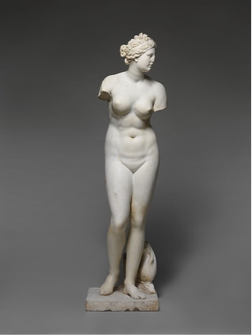The Body of Jewels
What impresses me in the Metropolitan Museum of Art is what we call
nowadays “bling.” All different cultures around the world are creative in the
way they adorn the body. My exhibit comes from different period of time from 1st
century to the 19th century. During those centuries, different
styles of jewelry were a creative way to beautify a human body. Different
cultures in history such as Ancient Egypt, Africa, Rome, or American has its
own styles of Jewels. The basic types of jewelry that every culture has are
earrings, necklace, rings, and bracelets. Some jewelry fascinates me as well
because not only are they made with metal, copper, or silver but Africans use animal
bones as well. What is also beautiful about jewelry is the time and effort that
was put in to make this type of work of art. The “bling” has a symbolic meaning
that gives a person a better feeling on the outside because they feel enhanced.
Human body sculptures also amazed me because not only did they make a body
sculpture but it was made showing the specific male and female body parts. The
creators in history chose to make the human body sculptures without clothes that
give me an aesthetic emotion because of the relation that jewelries and human
body has. Jewelry is a precious work of art that also provides connection to
the human body because of how treasurable it is. This strikes me the most
because a human body, male or female, should be respected as much as people
have respect and care for a valuable object.
1st or 2nd Century A.D.
Roman
Marble
Skirt
1969, American Culture
Metal
Andromeda and the Sea Monster
Domenico Guidi (Italian, 1625-1701)
Italian, Rome
Marble
Jewelry Set
Early 20th Century
African
bone, raffia, cotton
Marble Torso of a boy
1st-2nd Century A.D.
Roman
Marble, Pentelic?
Fragment of the Marble Stele
ca. 530 B.C.
Greek, Attic
Marble, Hymettian
Jeweled Bracelet
6th-7th Century
Byzantine
Gold, silver, pearlm amethyst, sapphire, glass, quartz, emerald plasma
The Prayer
Auguste Rodin
(French, Paris 1840-1917 Meudon)
modeled in 1909, this bronze cast in 1980
French
Bronze
Gold Signet Ring of Michael Zorianos
Ca. 1300
Byzantine
Gold
Heraldic Chain with Pendant Badge
Michael Botza
Early 17th Century, German Dresden
Partly enameled gold, pearl










No comments:
Post a Comment